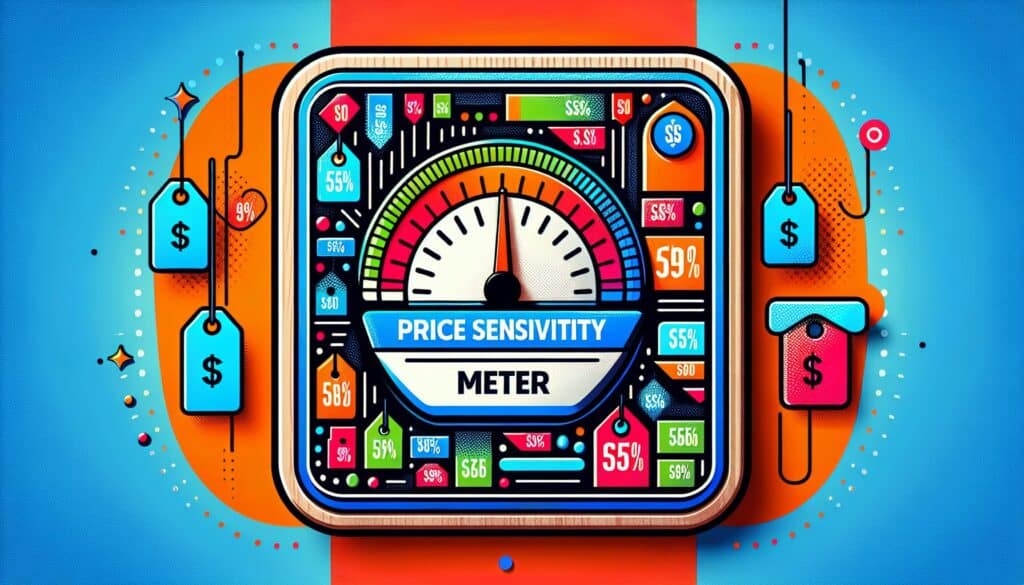To identify a range of psychologically acceptable prices for a product by asking consumers four specific price-related questions.
- Methodologies: Customers & Marketing, Economics, Lean Sigma, Manufacturing, Project Management, Quality
Van Westendorp Price Sensitivity Meter (PSM)

Van Westendorp Price Sensitivity Meter (PSM)
- Competitive Analysis, Consumer Experience, Customer Journey Mapping, Market Research, Product Development, Product Management, Product Pricing, Value Proposition
Objective:
How it’s used:
- Respondents are asked at what price point the product would be: 1) so cheap they'd doubt its quality, 2) a bargain, 3) starting to get expensive, and 4) too expensive to consider. The intersections of the responses indicate an optimal price point and acceptable price range.
Pros
- Provides a range of acceptable prices, easy to understand and implement, helps identify price thresholds.
Cons
- Doesn't directly measure purchase intent at specific prices, results can be influenced by respondent familiarity and context, doesn't consider competitor pricing.
Categories:
- Customers & Marketing, Economics
Best for:
- Understanding consumer price perceptions and identifying an acceptable price range for a new or existing product.
The Van Westendorp Price Sensitivity Meter (PSM) is particularly effective during the early stages of product development, especially in industries where pricing strategies significantly influence market success, such as consumer electronics, fashion, and food products. This methodology can be initiated by market research teams or product managers who seek to understand the pricing dynamics in relation to consumer expectations. It often complements other pricing strategies like the Gabor-Granger technique, where more quantitative data can be derived from willingness-to-pay questions that involve actual purchase scenarios. PSM facilitates a qualitative exploration of consumer attitudes towards price, enabling designers and engineers to position their products effectively. For example, in the automotive industry, applying PSM during the conceptual phase can aid in evaluating how consumers perceive the pricing of new electric vehicles relative to traditional options, which can be critical for market acceptance. The interactive nature of PSM allows for engagement with diverse consumer segments, ensuring that the resulting data reflects a wide range of price acceptance, which is particularly valuable in industries subject to rapid change or heavy competition. Collaboration among marketing, sales, and product development teams is often recommended, which can lead to more informed decision-making and alignment on pricing strategies that meet both market demand and financial objectives. Additionally, employing PSM can reveal nuances in consumer psychology, informing branding strategies and communication around price, which are essential when launching premium products.
Key steps of this methodology
- Ask respondents to provide the lowest price at which they would doubt the product's quality.
- Request the price they would consider a bargain for the product.
- Inquire the price point they feel is getting expensive.
- Determine the price at which the product would be too expensive to consider.
- Analyze the intersections of the price points to identify an optimal price and acceptable range.
Pro Tips
- Collect qualitative feedback alongside PSM data to understand the rationale behind price perceptions and thresholds.
- Conduct follow-up analysis to examine how external factors, such as competitors and market trends, influence price sensitivity and consumer behavior.
- Implement iterative testing by adjusting price points after initial PSM findings to refine pricing strategies based on real-world consumer responses.
To read and compare several methodologies, we recommend the
> Extensive Methodologies Repository <
together with the 400+ other methodologies.
Your comments on this methodology or additional info are welcome on the comment section below ↓ , so as any engineering-related ideas or links.
Historical Context
1960
1980
1983
1990
1995
2000
2010
1950
1980
1980
1986
1994
1995
2000
(if date is unknown or not relevant, e.g. "fluid mechanics", a rounded estimation of its notable emergence is provided)














Related Posts
Master Production Schedule (MPS)
Mass Customization
Marketing Funnel
Marketing Audit
MAPO Index (Movement and Assistance of Hospital Patients)
Manufacturing Resource Planning (MRP II)